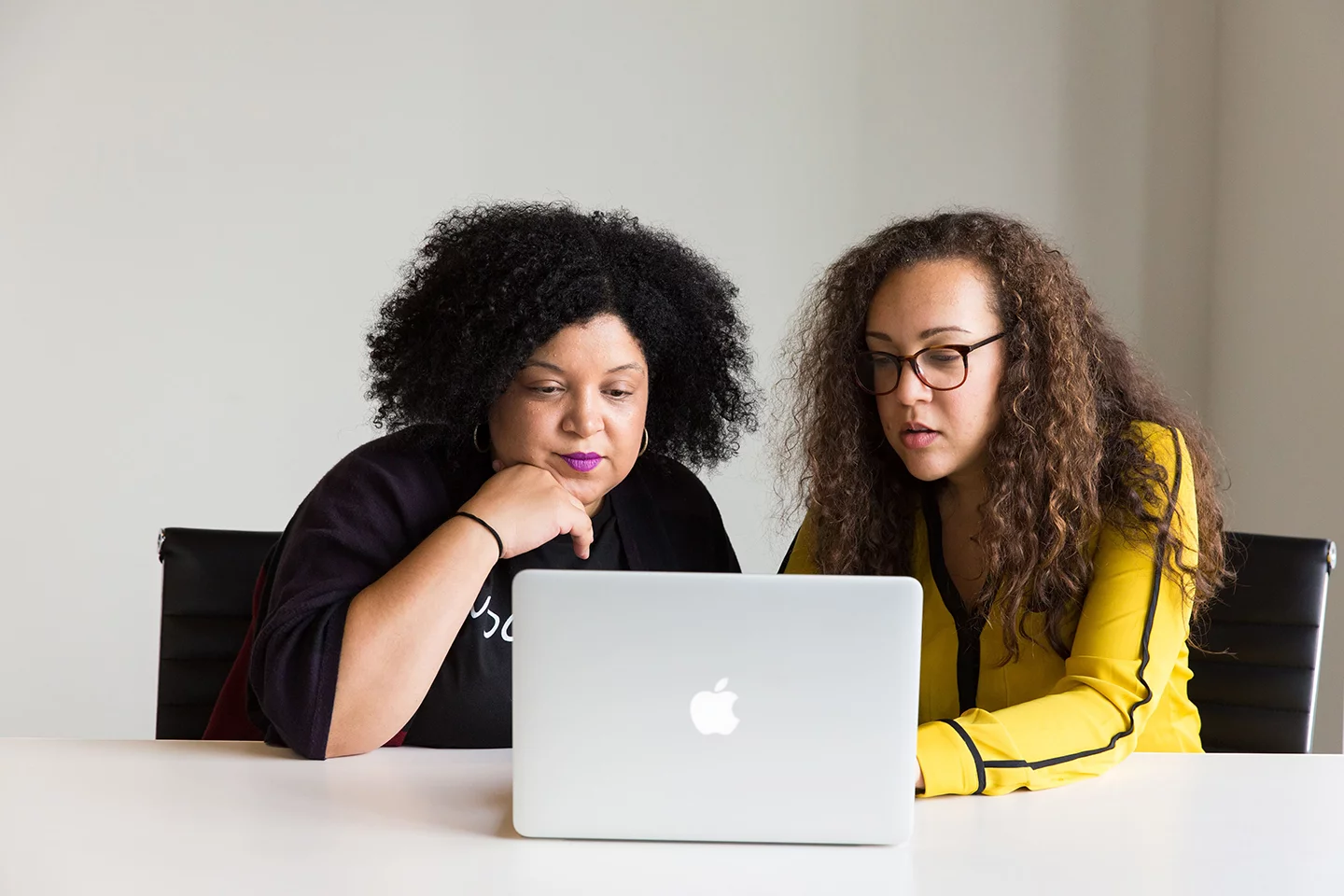Virtual training is here to stay, but the difficult conversations leaders and professionals must face still exist. How do you pivot training to prepare your workforce and how do you know if they’ve absorbed the information? When you are talking about emotional intelligence, how do you put those human skills into practice?
Our recent Future of Work Open House offered a behind-the-scenes peek into how Mursion builds effective virtual training using scenario-based learning and simulation, along with tips on how to create relevant and realistic scenarios for learning and how some of our partners are seeing ROI on immersive simulations for soft skills.
As follows is an excerpt of that discussion with Sheryl Adam, Mursion VP of Client Experience, and Sarah French, Director of Simulation at Mursion, moderated by Simulation Specialist Maria Flores. You can view the entire session, including conversations with several of our avatars, on our YouTube channel, and join us for our upcoming Future of Work sessions by signing up here. To experience Mursion’s virtual reality simulations and see for yourself how this platform can support your own business to achieve its leadership development and other business goals, schedule a demo today.
Sheryl Adam: The amazing thing about Mursion is there is no other real way to practice an authentic difficult conversation in quite the way that Mursion does. A lot of people have done traditional role-play and hated it. When you run into your colleague at lunch every day, you have trouble feeling like you want to practice something that you’re going to fail at with them. Also, most of us, and I speak for myself, are not professional actors. When we go to do those role-plays, we don’t do a great job and it just doesn’t feel that real. What Mursion does is it pairs technology with human talent to really make that experience feel super authentic.
Our clients are coming to us and saying, “We were having these really, really hard conversations at work every day and we want to give people a safe space to practice those conversations.” We’re teaching them these skills, but the only way they’re going to imprint those skills is through actually doing this over and over again, and practicing it, and getting thrown things that they’re not expecting. That’s where Mursion comes in.
We always like to say that Mursion is in the middle. There is something that happens first that prepares the learners for really strong learning and ideally, something that has to happen afterward to help them reflect and learn from that experience, too. When we meet with our clients, we often ask about what is this part of? What is the program? What are the goals and the intent of that program? What are you trying to teach? Then where we try to slot in is the practice opportunity around that learning.
Maria Flores: I know that in some of the engagements that I’ve been involved with, there’s been conversation about how much information is too much in advance. Sarah, we were talking earlier too about how sometimes even the client is so eager to get so many things done that they have to set up. We were talking about avatar monologues and how sometimes the avatar has to do a lot of the work. That’s not really the focus. You want to talk a little bit more about that?
Sarah French: There really is a sweet spot when you think about the interactive simulation portion of where Mursion fits in, in that training of wanting the scenario to feel obviously relevant, authentic to the learner audience, but not asking the learner to necessarily play a character that’s not themselves. Assuming a lot of history or circumstances, one example, sometimes to build in some history for the learner before they sit down to practice, sometimes a client will suggest, “Well, let’s say that this avatar has…” Thinking about delivering feedback, for example, “That this avatar has made these mistakes before and the learner didn’t say anything.” And we have to pause there because what ends up happening is now we’ve not only assumed a history for a learner, we’ve also actually assumed a missed opportunity on behalf of the learner.
Already, the learner is sitting down and saying, “Perhaps, actually, I would never let an opportunity like that pass. I would respond to that behavior or give that feedback right away. I would never have to have this conversation because I would have done the right thing before.” The learner is now defending this made-up history instead of practicing the skill that they need to practice.
We’re not trying to recreate an entire conversation. Most learners do lose energy in a simulation. It takes a lot of emotional energy to engage in that difficult conversation with an avatar when you aren’t used to communicating with an avatar. We try to pick just the right moment and it’s really about what are we trying to practice? What is the moment of that conversation that is usually the hardest?
It’s really about setting the learner up for success. They can only retain a certain amount of information in their heads when they go in. Just as the research around feedback is if you give more than two pieces of feedback, nobody’s going to remember anything and they’re not going to focus on anything. The same is true in a simulation, that if you go in knowing I’m only trying to do this one thing, it really allows you to practice that. If you go in with too much information and trying to practice too many things, you’re not going to really be able to do anything.
MF: How important have you found it to customize scenarios for each of your clients and do you use a standard template or do you tend to customize most of your scenarios?
SA: It really depends. The same root skills are true across a variety of different kinds of difficult conversations. Sarah used the example of asking open-ended questions. That behavior, that skill, is something that is going to serve you very well in a lot of different kinds of scenarios. We do have a bank of scenarios, and we find that when we use those scenarios, they are a really good starting point for a lot of the things that our clients are trying to practice, particularly in leadership development, diversity equity inclusion, where we find that it gets a little bit more challenging and we do find the need to customize a little bit more is when there is real product or industry knowledge that is necessary for the scenario.
MF: When you were diving into diversity, equity, and inclusion scenarios, what obstacles are we running into?
SF: I think the first one is because this issue is of vital importance, particularly right now and we’re seeing a lot of organizations who want to do something right now to address this issue or to provide opportunities to create dialogue around diversity, equity, and inclusion is that they’re often building the training program while also wanting to develop scenarios, practice opportunities for their learners.
Learners really want to know what is it exactly that my company wants me to do in this conversation. What is it that I’m supposed to be practicing? Thinking about a got you moment, or a moment where the learner does not feel safe, is a learner who is asked to sit down and practice a very sensitive conversation, perhaps addressing or identifying microaggressions, disrupting bias, things like that, that learners really want to get right. The implications, if they don’t, if they miss step or fail, can maybe tell a story about a learner that that’s not what they intended. The impact to the learner is significant in these conversations.
One of the things that we really want to make sure that we’re getting from our clients when we’re developing diversity, equity, and inclusion practice scenarios is a comprehensive understanding of how they are talking about this internally at their organization. What are values, strategies, things that we can reinforce that are already familiar to the learner that they’ve heard already on behalf of their organization, so that when they get to Mursion, this is not the first time that they’re hearing about these skills, that they know that this is important to their organization and they have a real clear idea of how their company wants them to respond to these types of conversations.
MF: When you’re creating those scenarios, how do you think about avatar character development? How much does that play into when we’re creating these designs?
SF: I think what’s counterintuitive a lot of times in design is that the client has a very clear idea of how they want the avatar to respond, what they want the avatar to say, all of those things. Actually, what we really want to focus on in the initial stages of design is what do you want your learners to practice? And then we’re going to actually develop the avatar perspective and responses in relation to the practice opportunities for the learner.
I think because we have professional actors behind the avatar, so the instinct is how will the avatars be performing today? It’s not. It shouldn’t be the avatar show. In fact, it’s really an opportunity for the learner to speak, to practice, to verbalize these skills. If the avatar is talking a lot, that’s usually a sign that we’ve maybe missed some opportunities in the design to really think about what the learner should be doing or we’ve got a real chatty avatar.
SA: One of the things that we’ve talked about is when a client has designed something that is trying to do too much in a 7 to 10-minute interaction, and a lot of times the client will say, I want to design something where the outcome is, and then they list eight things. How does the client get to know if a learner is getting out of this simulation, what they are supposed to be getting out of it? A lot of that actually starts with design. We want to design an outcome that is tangible and small and that the simulation specialist will be able to on the backend, say, yes, this learner did or did not meet this outcome and we track that.
We also have the opportunity to track what behaviors or skills they’re trying to practice, or sometimes their best practices that the client wants the learners to be practicing and we on our side can track, are the learners doing that? Then we share that information back with our clients, so getting that right really matters.
SF: What we talk about a lot, a successful outcome for a learner to be trying to achieve in a 7- to 10-minute simulation is observable, achievable, and ideally has it test in the avatar. What that allows us to do from a simulation specialist standpoint is if the learner is not using the strategies that have been stated effectively, or isn’t approaching this conversation in an effective way, then the avatar won’t agree to next steps.
Maybe you didn’t earn the avatar’s trust. Maybe that you didn’t listen to what the avatar’s concerns were so the next steps you’re trying to agree upon.
SA: You raise a really important point, that are our clients — again, one of those non-intuitive points that we have to explain to our clients, which is that avatars are like people and every time there’s an additional avatar in a simulation, there has to be enough time for that avatar to do something and to speak, otherwise, you’re just crowding the screen with personalities that aren’t going to do anything or accomplish anything. Sometimes our clients will say, in real life, we would have eight people there.
We need eight avatars to talk during the simulation and we have to say, how is that changing the practice opportunity? Because the more avatars that you put in a simulation, it’s going to make it longer because they just have to say something. So if it’s not actually changing the learning opportunity or changing the practice for the learner, we’re going to really encourage us to think about, yes, technically in real life, you might have eight people there, but can we accomplish the same thing with only two avatars because it’ll help us really narrow in the simulation and allow both of those avatars to bring something to the table that helps make the conversation itself really rich.
SF: Then another big piece of design is also the reflection and debrief. A lot of times what we’ll do is take that real life circumstance, condense it down to the practice opportunity. Can you practice the same skills with two to three avatars? Once we get to reflection and debrief, we can ask the learner to think about how they could apply the skills, they just practice to a larger audience. We know in real life you have teams of eight, right? And you might have to think about this conversation.
SA: I was just thinking about what I would want to leave the audience with and I think one of the best parts of my job is when we hear directly from learners about the impact of Mursion simulations. I was thinking about what kinds of things are learners saying when the design goes just right. What they’re usually saying is this feels exactly like a conversation that I would have at work. I got to practice exactly the thing that I just learned.
Then finally they say, “When do I get to do more?” This is something that you have to try these skills over and over again, and so we love it when our clients are already thinking about what the total scope of scenarios is that they could create that would allow learners to try this lots of times.
SF: Just to echo that, when a learner sits down and says, “I know what I’m supposed to practice today. I’m nervous, but I know I have an idea in mind. I know what I want to try. I’ve got some ideas of risks I want to take and I just want to see how this goes.” That is a learner who I think is using Mursion to the best possible way to use this platform. To come in and say, “I already know how I want to navigate this conversation and I’ve identified some places where I want to try something new, and I want to see how this lands.”
Subscribe for the latest Mursion articles and updates.
By clicking the sign up button above, you consent to allow Mursion to store and process the personal information submitted above to provide you the content requested. View our Terms and Conditions.




